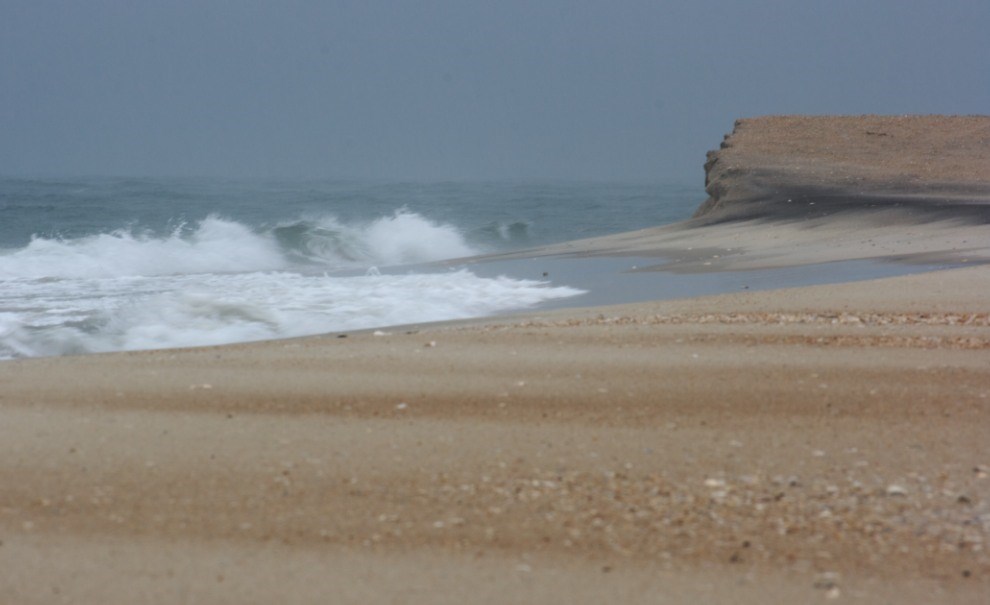Part of a series of articles titled Coastal Geomorphology—Beach Response to Storms.
Article
Beach Profile Changes

NPS photo.
The profiles of beaches change in response to changing wave conditions, which can occur on a seasonal timeframe or during an individual storm. For many areas, low-energy waves dominate in the summer and storm waves dominate in the winter; thereby, coastal geomorphologists use seasonal descriptors to distinguish between low- and high-energy wave conditions. They describe the beach profile’s response to storm conditions through comparison of the “bar profile” and “berm profile.” Berms are landward-sloping shelves of sand on the backshore of a beach; bars are offshore ridges, banks, or mounds. When low-energy waves are present, the beach profile is generally characterized by a wide berm and smooth offshore profile; this low-energy profile is referred to as a “berm profile” as well as a “summer,” “normal,” or “swell” profile (Komar 1998). During periods of calm wave action, waves run up on the beach face and deposit sand, building the berm seaward and causing a steeper beach-face slope to form (Sorenson 1997). High-energy waves have intensified wave swash and remove sediment from the berm, which is stored offshore in bars parallel to the shoreline in a configuration described as the “bar,” “storm,” or “winter” profile (Komar 1998). Higher and steeper waves common during storm conditions cut back the berm, forming a scarp and flattening the slope of the beach profile (Sorensen 1997).
Related Links
Last updated: June 5, 2019
